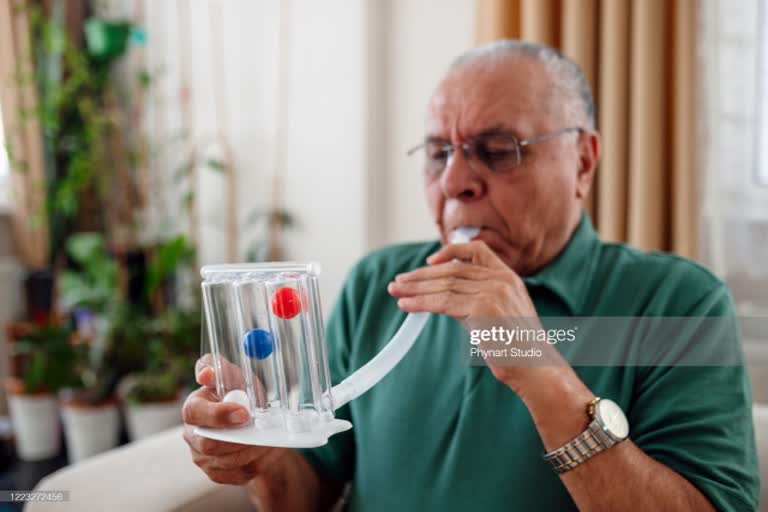COPD Chronic Obstructive Pulmonary Disease, or COPD, refers to a group of diseases that cause airflow blockage and breathing-related problems. It includes emphysema and chronic bronchitis. COPD is seen in people who are frequent smokers. COPD is not a single disease but a group of diseases like Emphysema and Chronic Bronchitis. Many people are unaware of COPD and ignore this as general fatigue and weakness.
Symptoms:
- Frequent coughing or wheezing.
- Excess phlegm, mucus, or sputum production.
- Shortness of breath.
- Trouble taking a deep breath.
The main test for the diagnosis of COPD is spirometry. This involves blowing air into a tube. This reveals the capacity of the lungs. Some may require X-rays, Scans, and blood tests. These are useful for determining the severity of the disease.
Effects of COPD:
The Centres for Disease Control and Prevention (CDC) says that as compared to adults without COPD, those with this disease are more likely to:
- Have activity limitations like difficulty walking or climbing stairs.
- Be unable to work.
- Need special equipment like portable oxygen tanks.
- Not engage in social activities like eating out, going to places of worship, going to group events, or getting together with friends or neighbors.
- Have increased confusion or memory loss.
- Have more emergency room visits or overnight hospital stays.
- Have other chronic diseases like arthritis, congestive heart failure, diabetes, coronary heart disease, stroke, or asthma.
- Have depression or other mental or emotional conditions.
- Report a fair or poor health status.
COPD Treatment:
Along with the medication prescribed to manage the COPD symptoms by the doctor, CDC states some of the additional treatment options that your physician may consider, which are:
- Quit smoking
- Avoid tobacco smoke and other air pollutants
- Ask your doctor about pulmonary rehabilitation
- Take medication
- Avoid lung infections
- Use supplemental oxygen
Pulmonary rehabilitation is very useful for COPD victims. This includes breathing techniques, exercises to prevent fatigue and increase body capacity. Studies show that most people with pulmonary rehabilitation end up exercising for more than half an hour a day.
1. Pursed Lip Breathing:
This exercise reduces the number of breaths you take and keeps your airways open longer. More air is able to flow in and out of your lungs so you can be more physically active. To practice it, simply breathe in through your nose and breathe out at least twice as long through your mouth, with pursed lips.
2. Belly Breathing, aka Diaphragmatic Breathing:
As with pursed-lip breathing, start by breathing in through your nose. Pay attention to how your belly fills up with air. You can put your hands lightly on your stomach, or place a tissue box on it, so you can be aware of your belly rising and falling. Breathe out through your mouth at least two to three times as long as you inhale. Be sure to relax your neck and shoulders as you retrain your diaphragm to take on the work of helping to fill and empty your lungs.
Practice these for 5-10 minutes every day. Also, since we are living with the COVID-19 pandemic, COPD patients fall under the high-risk group. If you have COPD, follow your medications as prescribed, avoid triggers, stock up your medicines, check with your oxygen supplier, keep your inhaler handy, and stay home as much as possible. If symptoms seem to worsen, contact your doctor or healthcare provider immediately.



